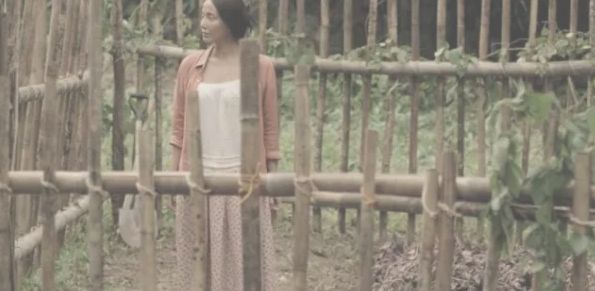Secluded in the mountains, Iyong (Katrina Halili) religiously tends to her sweet potatoes along with her husband Banong (Alex Medina).
As the sole means of their livelihood, the couple works diligently to protect the crop from an unseen wild boar, which is introduced to us in the opening scene.
Set in 2048, “Mga Anak Ng Kamote” depicts the story of Iyong’s quest to find Banong, who mysteriously disappeared one day.
With only one name to go on as her lead, Iyong’s search leads her to the arms of a reporter who selflessly took her in as she continues to look for her husband.
After being awed by Carlo Catu’s “Kung Paano Hinihintay Ang Dapithapon,” I was quite excited to watch “Mga Anak Ng Kamote.” It was intriguing; mysterious, even.
First act: a technical masterpiece
Its first act is its crowning glory–hypnotic, enthralling, and skillfully executed. The sequences were impressive. And while devoid of dialogue for the most part, the smart orchestration of sound design, cinematography and the actors’ performance gave the movie a chilling, almost haunting, vibe.
There’s a sense of foreboding especially after seeing tight shots of Halili who, for the most part of the film, had this stoic-like aura (her acting was superb).
The dynamic between Halili and Medina created an uncomofortable sense of excitement. Not much is said between the two but their eye movements, body language, and the haunting effect caused by the film’s technical aspects (sound design, incidental music, and transition) all say that something big is about to go down. The buildup was so good it’s almost tangible.
I absolutely enjoyed the mountain scenes. It’s very reminiscent of Joss Whedon’s “Hush” because it didn’t have a lot of speaking lines but the sequences were absolutely terrifying.
“Show, not tell” please
The movie, however, slumped during the second act with what felt to me was rushed writing.
While this is the part where we learned the real scenario and what the movie really is all about, this is also the part where the magic dissipated. The tension built by the first act seemed to have evaporated the moment Iyong set foot in the city.
Interestingly, as the aspect ratio expanded, signalling the expansion of Iyong’s consciousness, the movie, ironically, took a few steps back.
There were some plot holes and unanswered questions. Also, the story unfolded via narration. We didn’t see the story unfold. Instead, it was dictated to us. I’m a huge fan of “show, not tell” rule in storytelling and that’s why the second act was an unpleasant experience.
Fortunately, the movie picked up during its final act. While it lacked the luster of the first act, it concluded the movie decently enough. That final scene was a treat.

Leave a Reply